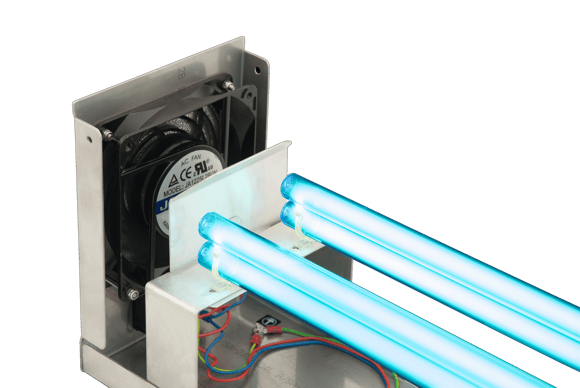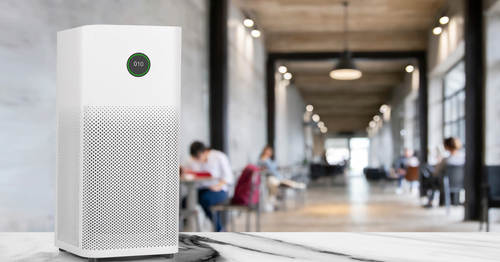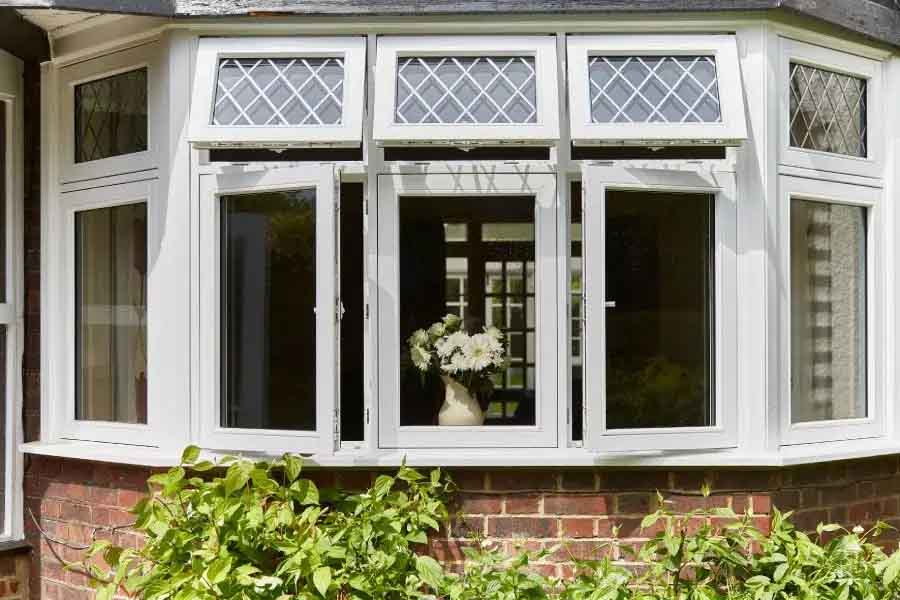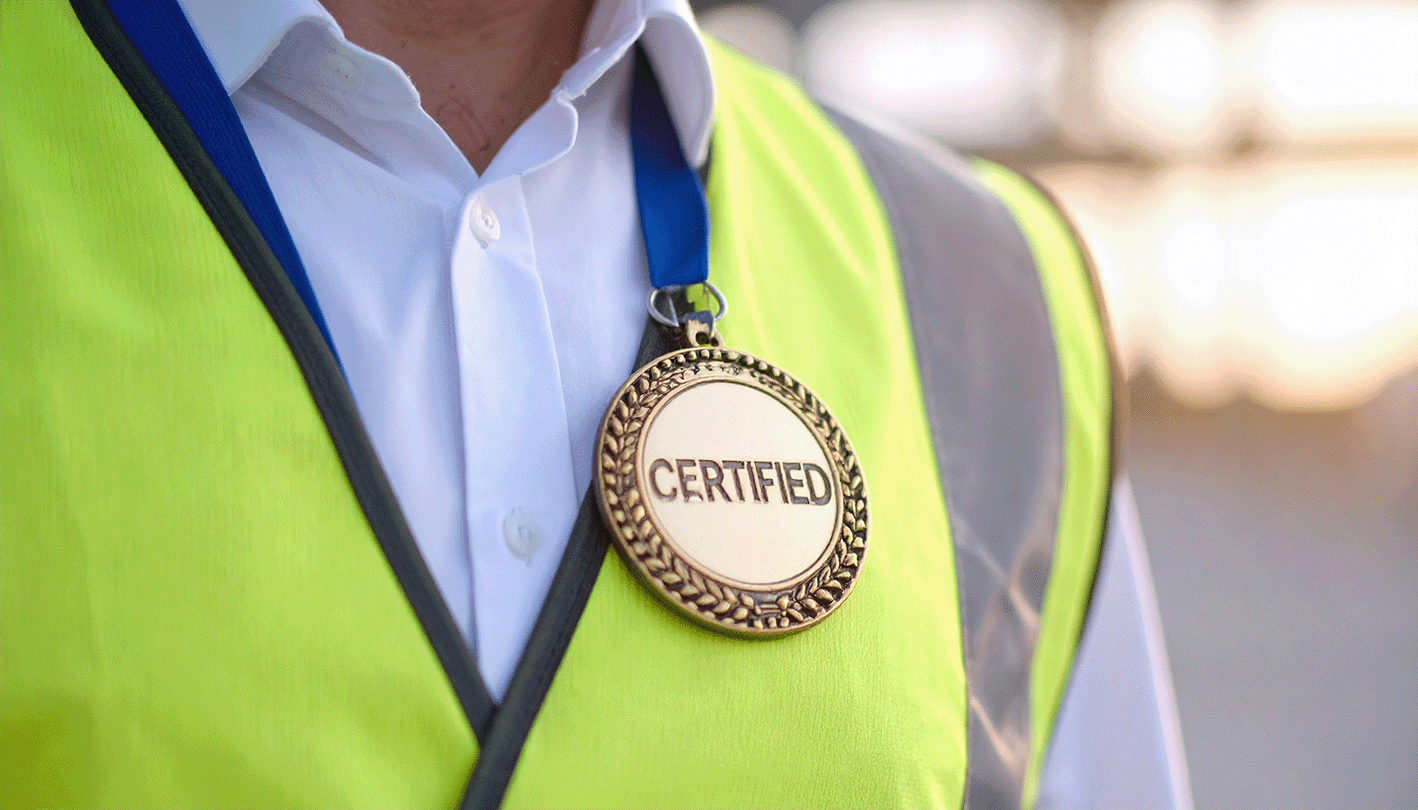UV Air Purifiers: Do They Work?
Do UV air purifiers work in non-residential buildings? The two-word answer is: “it depends.”
Yes, UV air purifiers can be a simple and cost-effective ultraviolet germicidal irradiation solution. But only if installing a UVGI solution in your HVAC system is not viable for your target space.
UV air purifiers alone are not usually the final answer to a problem. They act more like a supplement to a building’s indoor air quality solution, e.g. bipolar ionisation devices or fitted UV-C lamps in your AHU. They are something you can deploy when circumstances mean that other recommended solutions are unviable for the space, or temporarily unavailable for your building.
In this article, we run through the pros and cons of purifiers, when best to use them and how to buy the right ones.
If you are new to UVGI, we recommend first reading our UVGI Explainer: How it Works, Benefits & Solutions, and then coming back here for our view on standalone UV air purifiers.
Pros and cons of UV air purifiers
Pro #1: They are portable
HVAC systems are not perfect. Sometimes you have a room with poor ventilation and poor air flow, and your system is not able to adequately change the air. Especially in buildings with mandated airflow requirements such as schools (240 litres per second).
Having a portable UV purifier is handy to plug the gaps where your IAQ monitor highlights bad air.
Pro #2: Can be cost-effective when used right
Be aware, they are only cost effective if you use the right machine for the space. There’s a wide range of products on the market and they can be as small as litter bins – e.g. for meeting rooms or waiting rooms – or as large as dumpster bins – e.g. for factory floors or hospitals. Use the wrong size and power and you could be throwing money away.
The cost of a high quality purifier ranges from £650 to upwards of £10,000. So it’s important to choose the right one.
We recommend you always assess your target space properly so you save money and energy by selecting the right product.
Con #1: Limited performance
Standalone air purifiers can only clean the air that passes through it. This is good when the air is moving through a space fairly regularly, but if not, then these machines have a limited reach. Plus, they have to work harder to draw the air through, which consumes more energy.
This is one reason we don’t recommend relying solely on purifiers, but see them as an enhancement to a holistic IAQ solution.
For example, the most effective UVGI solutions are centralised in your AHU or in the ductwork. We talk about best placement for these solutions in our article: How to Select and Install the Right UVGI Solution for Your Building.
Con #2 Not always cost effective
Cost effectiveness is only a pro if purifiers are selected and located properly. If not used in the right way, you could be wasting your money.
For example, if you select a model that is underpowered for the size of your space, it won’t draw in enough air to make a difference, or it will need to work harder, consume more energy and make more noise than it would with the right device.
Extra fan power = extra energy = extra noise.
If you locate the device in the wrong place, where it is not needed, then again you will be spending money and wasting energy. We recommend assessing your building with IAQ monitors. Or for a better picture you can use airborne tracers (such as Safetraces veriDART) that, when collected, create a visual map of airflow through the building, where your filters are effectively reducing pollutants in the HVAC system, and where they are not. With this map you can see where best to place your air purifiers.
Remember that purifiers use HEPA or other appropriate filters to catch inactivated contaminants. So, the more you use the purifier, the more regularly you need to change the filters, which can get expensive.

We mentioned earlier that UV purifiers are something you can deploy when circumstances demand it. But what are those circumstances?
Best scenarios to use a UV air purifier
1. Your building does not have a proper HVAC system
If you don’t have a ventilation system that can hold In-AHU or In-Duct UVGI solutions, we recommend employing upper-room UVGI or a standalone UV air purifier.
2. Your HVAC does not have room in the AHU or ductwork
UVGI solutions require space to install them, both to hold them and to make sure the pressure does not rise and increase your energy consumption. If space in the AHU or ductwork is limited, it may be advisable and more cost-effective to place a purifier in the room.
3. Your target room has no ventilation, no windows or windows are by a busy road
This could be in doctors’ waiting rooms, dentists’ offices, or offices converted from old terraced houses. If you can’t open any windows, or the shut windows are keeping out bad air, you will need to give two air changes per hour for a healthy air quality.
Remember that the devices will be noisy, so should not be used in quiet spaces like school classrooms.
4. In flexible working spaces
If you manage a temporary space, or your workplace moves around frequently, then the portability of air purifiers will make them worth your while.
This is useful when you do not have a dedicated ventilation system for your space, do not have control over it, or the space is not always occupied – like an events space or a hired meeting room.
5. Where noise is not an issue
Be aware that these machines make noise as they need to draw air in to work. If noise will be an issue in your space, you need to check the decibel rating against the fan speed before you select your model.
This doesn’t mean air purifiers can’t be quiet, it just means that they will be less effective, meaning you will require more units (and more cost).
For example, classrooms shouldn’t be on a setting higher than 40dba (db = decibel, dba = decibel rating adjusted for normal human hearing). Note that even then purifiers can exceed this limit if there are high levels of CO2, or varying temperatures.
It’s this reason why places with high footfall like lobbies, waiting rooms or corridors, are often good locations for air purifiers.
Buying the right UV device for the right space
To get to the desired clean air delivery rate, selecting the right quality and size is critical to reach a purifier’s optimum effectiveness and energy efficiency.
At ARM Environments we assess a space by its floorplan for the correct device and correct placement before installation. We make sure it won’t get blocked by furniture or people during the daily running of the space.
Small purifiers cost in the region of £650 but they also reach into the £10,000s. This, and the focus on efficiency and effectiveness is why we put so much effort into assessing the IAQ in a building or space before recommending the optimal solution, or our clients wouldn’t be very happy.





